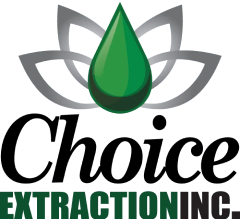Why Third-Party Lab Testing Matters in the Hemp Industry
As the hemp and CBD industries continue to grow, so does the need for trust, transparency, and safety. With products ranging from oils and edibles to topicals and smokables, how can consumers be sure they’re getting what they pay for—and nothing they didn’t bargain for?
The answer lies in one crucial quality control process: third-party lab testing.
In this article, we’ll break down what third-party lab testing is, why it’s essential in the hemp industry, and how it protects both consumers and brands alike.
What Is Third-Party Lab Testing?
Third-party lab testing is the process of sending hemp or CBD products to an independent, accredited laboratory—not owned or affiliated with the manufacturer—for detailed analysis. These labs test for:
-
Cannabinoid content (like CBD, THC, CBG, etc.)
-
Terpene profiles
-
Contaminants (pesticides, heavy metals, residual solvents, mold, bacteria)
-
Purity and potency
The results are compiled into a document called a Certificate of Analysis (COA), which verifies what's truly in the product.
Why It Matters
1. Verifies Potency Claims
One of the biggest issues in the hemp industry is mislabeling. Studies have shown that many CBD products contain more or less CBD than advertised, and some even contain illegal levels of THC.
Third-party lab testing ensures that the potency matches the label, so customers know exactly what they're consuming.
Example: A product labeled “30mg CBD per serving” should test close to that amount—no more, no less.
2. Detects Harmful Contaminants
Hemp is a bioaccumulator, meaning it absorbs toxins from the soil. Without proper testing, products may contain:
-
Heavy metals (lead, arsenic, mercury)
-
Pesticide residues
-
Solvent traces (from extraction processes)
-
Mold, bacteria, or mycotoxins
These substances can pose serious health risks, especially to vulnerable populations. Third-party testing ensures that products are clean and safe.
3. Confirms Legal Compliance
In the U.S., hemp products must contain less than 0.3% Delta-9 THC to remain federally legal. Testing confirms THC levels and helps brands stay compliant with state and federal regulations.
Failure to do so can result in:
-
Legal action
-
Product recalls
-
Damage to brand reputation
4. Builds Consumer Trust
When a company shares its third-party test results, it shows a commitment to transparency and accountability. This gives customers confidence that they’re buying from a brand that values quality and honesty.
Many reputable brands provide COAs accessible by QR code or website link, so consumers can verify a product’s lab results instantly.
5. Protects the Industry’s Reputation
With so many unregulated or poorly made products on the market, third-party testing helps raise industry standards. It separates high-quality, legitimate products from questionable ones—and protects consumers from being misled or harmed.
In turn, this elevates the hemp industry as a whole, paving the way for broader acceptance, investment, and growth.
How to Read a Lab Report (COA)
Here’s what to look for when reviewing a COA:
✅ Cannabinoid Profile – Shows the levels of CBD, THC, and other cannabinoids
✅ Terpene Analysis – (optional) Gives insight into flavor, aroma, and potential effects
✅ Contaminant Screening – Should confirm the absence of heavy metals, pesticides, and microbial threats
✅ Testing Date – Should be current (within the last 6–12 months)
✅ Lab Accreditation – Look for ISO-certified labs with transparent practices
Final Thoughts
Third-party lab testing isn’t just a nice-to-have—it’s a must-have in the hemp industry. With so many products and claims flooding the market, lab reports are the gold standard for verifying safety, accuracy, and legality.
Whether you're a consumer, retailer, or brand, always look for (or provide) products that have been independently tested—and make those results easy to access.
Because in an industry rooted in wellness, transparency is everything.

